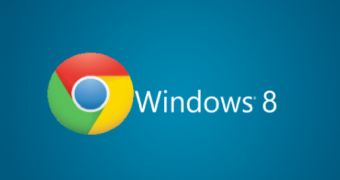Hybrids are a hot topic these days and when we use the term, we do not mean 2-in-1 machines, like tablet/laptops convertibles.
Hybrids can also define devices capable of booting between two operating systems. Like the ASUS Transformer Book Due, which never made it to the market because Google and Microsoft partnered up against the project.
However, at the Google I/O conference, the search giant said it was planning to bring your our Android apps over to the Chromebook and that got us thinking a little bit.
If the Android/Windows mixture isn’t a viable one, how about imagining a Chromebook/Windows one instead? And if you think about for a second, it might actually make more sense than the former.
Chromebooks are getting more and more popular
At first Chromebooks were dismissed as an useless web browser-centric machines, but since then a lot of things have changes. Chromebooks are increasingly getting more and more features on board and it has even become easy to get work done offline.
What makes these devices so extremely attractive it’s their sheer simplicity. Unlike your regular Windows laptop, you don’t have to worry about security, arranging settings and annoying system updates won’t be there to bug you when you turn the system on.
That’s why Microsoft has been feeling threatened by Chromebooks. The company actually put out some mocking videos in an attempt to denigrate the laptops, where it asked “What can you really do with a Chromebook?” Their answer was, nothing much.
Windows has it perks
Sure Microsoft is right in a sense - you can’t work in Photoshop or use Skype or connect to a VNP. Sure Chrome OS has some basic VPN feats but they aren’t exactly fully optimized.
On top of that you won’t be able to play your favorite Steam games either and the list of limitations stretches on.
On the other hand, Chromebook offers a fast, secure ecosystem for users to perform basic computational tasks. So what would it be like to blend the best of these worlds? Imagining a dual-boot Chrome/Windows laptop
Dual-boot devices might not have caught on even if they managed to make it on the market, for the simple reason that they would have offered two separate stand-alone operating systems (however this is not the case with the new Transformer Book V, which lets you run Android apps within the Windows interface).
Chrome OS online friendliness might solve the issue for future manufacturers looking to blend the two universes together.
Since most of the things happening on a Chromebook are actually cloud-based, all actions on the Chrome OS laptop could be made to be seen on the Windows based side and the other way around too.
The idea is that when you would need to get productive and use demanding programs like Photoshop or play a demanding game title you could immediately head over to Windows.
But for some light work which doesn’t really necessitate the whole Windows background, you could drop for a visit in Chrome OS, where you can browse and take advantage of all the speed and simplicity it offers.
Since both Windows and Chrome were designed to be used with mouse and keyboard in mine, the experience would prove much smoother than blending the desktop-like Windows with the mobile touch-centric Android.
To conclude, such a laptop could be powered by the Bay Trail platform, which today can be found in a plethora of Windows 8 tablets. The laptop could be slim and light too, reminiscent of a 2-in-1 hybrid.
Surely, if Google and Microsoft couldn’t agree on the whole Android/Windows story, things won’t probably go better with the whole Chrome/Windows things. But we can imagine, can’t we?

 14 DAY TRIAL //
14 DAY TRIAL //